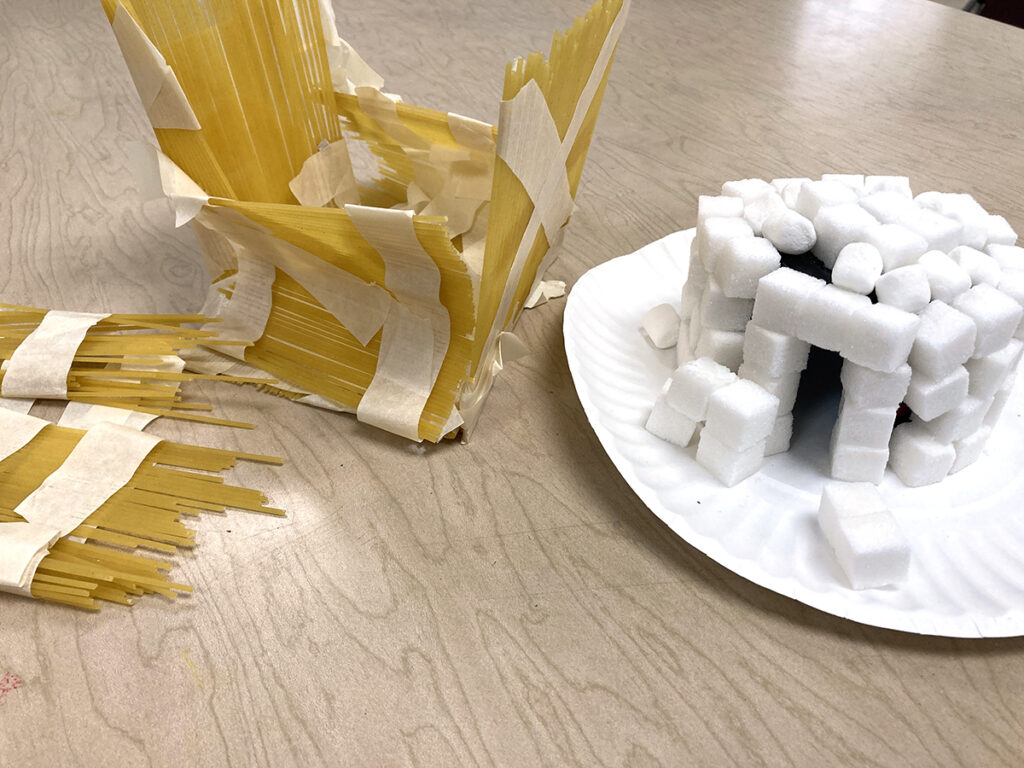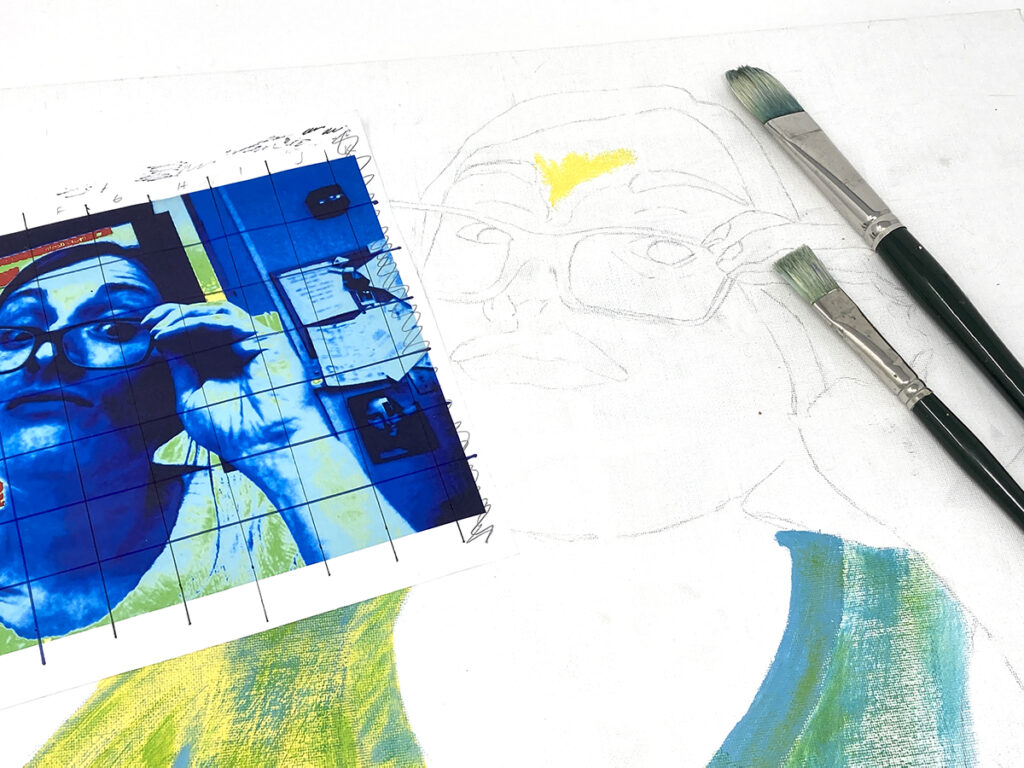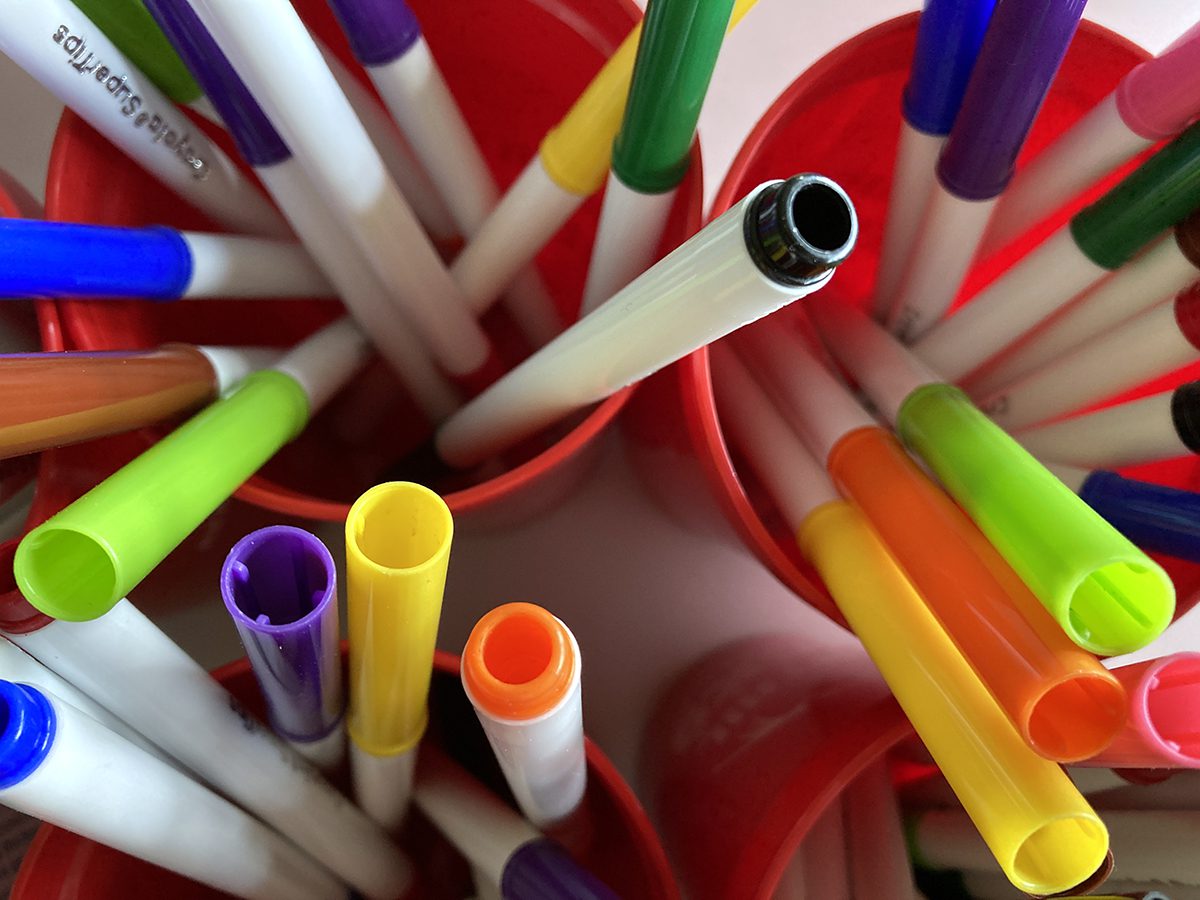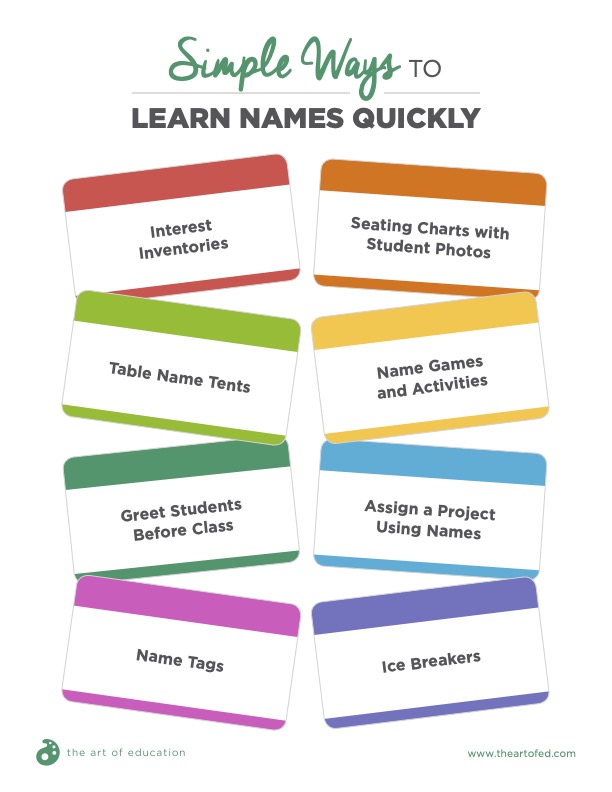It’s that time of year when we prepare to welcome new students into our art rooms. It is also the perfect time to plan activities to establish relationships and build rapport. Start from the beginning to set the tone. Cultivate a community of artists who are motivated to learn and succeed in the art room. Strong, positive relationships between students and teachers enhance the art room culture when there’s mutual trust and support. Your students may be more willing to explore original ideas, take risks, collaborate, and discuss their artistic process with others when they feel comfortable and welcomed from the beginning.
Let’s take a look at nine strategies to communicate with students and build rapport.

1. Learn names.
A name is one of the most important characteristics of someone’s identity. For impressionable young art students, knowing and correctly pronouncing their names can help them feel like valued members of the art room community. According to former Everyday Art Room podcast host Nic Hahn, it’s the secret to connecting with others. If something so simple is the key to every relationship, it should be an essential part of your relationship-building with students.
Sometimes learning names can be challenging, especially when you teach hundreds of young artists in just one week. Create seating charts with student ID photos, and intentionally say students’ names out loud each time you talk to them. For more Simple Ways to Learn Names Quickly, check out this complimentary download from our PRO Pack, Building Positive Relationships. You can find this Pack and others like it in PRO Learning.
Download Now!
Here are more ideas to assist you in quickly learning students’ names:
- The Perfect Game to Learn Your Students’ Names
- Name Art Designs: The Perfect Lesson to Start Your Year
- Using Everyone’s Favorite Word (Ep. 159)
- Learn Students’ Names Quickly With Name Tents
- How to Remember Students’ Names
- 6 Ways to Support Transgender Students in the Art Room
2. Have one-on-one conversations.
One of the best ways to build rapport with your students is to talk with them. Spending one-on-one time with each student makes them feel valued and lets them know you care about them beyond the art room. Ask them about their weekends, extracurricular activities, the music they like, or what they had for school lunch. When you spend time with them, mirror how they sit or use language during conversations. Tapping into their lingo may help you seem hip, but it can also clue you into what they are actually saying to each other!
3. Offer student choice.
Offering student choice not only helps you differentiate instruction but also gives students more autonomy in the artistic process. When you plan your lessons with student choice in mind, you invite students to express themselves and connect with their projects more meaningfully. Implementing student choice establishes a level of trust. It tells them you believe they are capable of making creative decisions about their artwork. Student autonomy can feel inspiring and empowering. You may discover other benefits as a result, such as increased learner engagement and fewer behavioral issues.
If you are interested in learning more about offering student choice in your art room, check out these resources:
- How to Get Your Choice-Based Room Ready for the School Year
- 8 Classroom Management Tips No Choice-Based Teacher Can Be Without
- 10 Things No One Tells You About Being a Choice-Based Art Teacher
- How to Work With Students With Special Needs in a Choice-Based Space
- Choice-Based Art Education Graduate Course
- Differentiation in the Art Room Pack found in PRO Learning
4. Model the tough stuff first.
No matter what age your students are, getting out of their comfort zone can be challenging. For some students, it can be a deal-breaker because taking risks is too uncomfortable. When you plan lessons that encourage students to try new things but may invite pushback, consider modeling with an element of silliness.
When I taught digital photography, one of my favorite lessons was capturing motion. I lined up my students along the hall with their cameras. I raced by them down the hall and ended with a jump and a click of my heels. I also headbanged like a heavy metal singer so they could photograph the movement of my hair. The students loved trying to photograph their art teacher doing something silly and out of the ordinary.
5. Create art with your class.
Being an art teacher has an advantage some other subjects don’t have. We can regularly practice what we preach in class. You may have decided to become an art teacher because you love to make art. Why not share your creativity with your students by making art alongside them? Take a few minutes to practice colored pencil techniques or work for five minutes in your visual journal. This shows students that you value what you teach to them and are an artist at heart.

6. Share student art on your classroom’s social media.
Showcasing your students’ art on social media platforms is a great way to connect with them. It also helps advocate for the visual arts and build rapport with parents and community members. Using social media to promote your visual arts program can be as simple as capturing your students making art, sharing an art display, or posting your students’ favorite artwork. Always adhere to your district and school guidelines when using and sharing student images.
7. Compile a music playlist with student song requests.
Do you allow students to listen to music during art class? Listening to music during studio time is a common thread for many artists, students, and art teachers alike. Soundtracking can help students with building community and social-emotional learning in the art room. Giving students opportunities to listen to and share the music they enjoy is a big motivator, as mentioned in this article. While pumping up the jams may not work for everyone, it is a great way to connect with students at any grade level. Ensure all music is not explicit and adheres to your district and school guidelines.
8. Write personalized notes.
Writing personalized notes can be a nice surprise for students when they least expect it. All you need is a pack of sticky notes and your favorite pen or marker. During your prep period or after dismissal, take a few minutes to write on a sticky note for a handful of students. The note can be about how well they demonstrated a new technique or how you appreciated their help cleaning up. Leave the note on their artwork for them to find next class, or place it on their desk while they are working during class. Try writing a personal note for each of your students. Make a little mark on your roster to track who received a note. This little gesture can show your students how much you care in a big way.
9. Show your artwork.
When decorating your art room this year, consider displaying some of your artwork to cultivate an art studio atmosphere. Hanging one or two pieces of framed artwork can be a conversation starter and an example of techniques or art styles. It can also give students a chance to see their art teacher’s “artist side.” Sharing this passion with your students can establish you as the expert and develop their trust in you as their teacher.

Being intentional about establishing a community in your art room is one of the best ways to build trust, mutual respect, and rapport with your students. Starting at the beginning of the school year shows your students who you really are: a kind, compassionate, and caring art teacher. Take the time now to develop relationships with your students with some of the ideas listed above. Ensure you kick off the year strong and have results that will last well beyond their time in your art classroom!
What are some of your favorite first-day activities to get to know your students?
What did your most memorable art teachers do to make you feel welcomed in the art room?
Magazine articles and podcasts are opinions of professional education contributors and do not necessarily represent the position of the Art of Education University (AOEU) or its academic offerings. Contributors use terms in the way they are most often talked about in the scope of their educational experiences.






